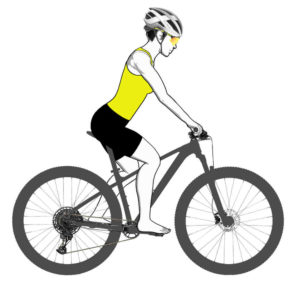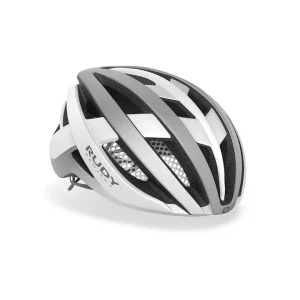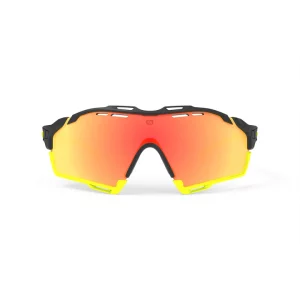Tips for the Beginner Cyclist

If you are interested in starting to ride a bicycle or are a beginner cyclist, I would like to provide a little advice and some tips to make your cycling experience more enjoyable and safer. Some people take up cycling after a leg injury as cycling is a non-impact activity. You will often find stationary bicycles within physical therapy clinics to provide a leg strength exercise and range of motion without the impact of running. Regardless of your reason for cycling, you should check with your health professional before engaging in any physical activity.
Safety
Bicycling can be a fun and enjoyable activity but also comes with risks. Depending on where you ride, you may encounter cars, pedestrians, animals, trees, and potholes. There is the added risk that you can be moving very quickly, especially downhill on the road where speeds can easily exceed 20 mph. In comparison, professional cyclist can reach 65 mph in a downhill section during a race event.
Your Bicycle
Make sure that your bicycle is in good condition before your ride to help avoid a mechanical breakdown and to make your ride more enjoyable. Check your front and back brakes to make sure they are functioning properly. Your front brake is able to provide greater stopping force but excessive use of the front brake can cause your front wheel to lock up and flip you over the bike (personal experience). Take the time to learn how your bike behaves when trying to stop quickly can avoid an unpleasant accident.
Check your tires for excessive tread wear and for foreign objects (glass mostly) embedded in the tire. Getting a flat tire while on a bike ride isn’t much fun. It’s good practice to carry a spare tube, tire levers and mini-pump or CO2 cartridge with you in a saddle bag in case of a flat. For people with tubeless tires, carry extra tire sealant instead of tubes. It is also important to learn how to change a flat tire. Your local bike shop may provide a course on basic bike maintenance. Of course, you can also watch YouTube videos to learn how to change an inner tube.
A well-conditioned bike will eliminate excess friction requiring less effort to pedal and make your ride much more enjoyable. Keep your chain well lubricated and tires pumped to the appropriate pressure for your terrain. Check to make sure that your brakes don’t rub as this can make your ride miserable.
If you ride on the road, I recommend getting a front and rear red light. There are many inexpensive rechargeable options available with modes for constantly on or flashing. Please note that some states and countries do not allow flashing lights on bikes as these are reserved for emergency vehicles only. In Pennsylvania, we are allowed to use the flashing lights mode and I use it every time I ride. I believe it helps improve visibility by drivers, especially close to sunrise and sunset when sunlight can temporarily blind a driver’s vision.
Helmets

Always wear a helmet when riding a bike. I, unfortunately, have had many bike crashes during my almost 40 years of cycling and I can tell you that accidents will happen when you least expect it. You don’t need the most expensive helmet as all cycling helmets are required to meet the same safety standards. The primary difference between helmets will be weight, ventilation, and aerodynamics.
Make sure to wear a helmet that fits your head. Many bike helmets have some sort of ratcheting retention system in the back that you can loosen or tighten to adjust to your head size. Tighten the retention system so that the helmet does not rock back and forth or side to side on your head. Always keep the chin strap connected while riding a bike. Adjust the chin strap length so that you cannot fit more than 2 fingers between the strap and your chin. A helmet that falls off your head does nothing to protect your head during a crash.
Manufacturers recommend replacing your helmet every 3-5 years due to degradation of the foam and other products within the helmet. Aways replace your helmet after a crash.
Sunglasses

I recommend wearing sunglasses while riding a bike for eye protection from UV rays, small rocks, dust, and flying insects while improving visibility of the road or path in front of you. My personal preference is wrap around glasses to prevent wind/dust from reaching your eyes from the side. It’s quite unsettling to lose visibility from dust getting in your eyes while flying down a hill.
If you wear contacts, sunglasses also help prevent your contacts from drying out while riding.
Headphones
DON’T. Just don’t wear headphones while riding a bike. Awareness of your surroundings is extremely important while cycling. If you ride on the road, you won’t be able to hear cars coming up from behind you. Even if there are electric cars behind you, you will be able to hear their tires rolling over the road when they are moving over 25 mph.
If you don’t ride on the road, wearing headphones will prevent you from hearing if other riders are passing you on the trail or path.
Riding on the Road
Riding on the road is the most convenient option for many people. When riding on the road, ride with the flow of traffic such that you are moving in the same direction as other vehicles on your side of the road. Follow the vehicle and bike laws for your location (Pennsylvania Bike Safety and Laws). Most laws in the U.S. require people to ride their bikes on the right side of the roadway. This does not mean that you should ride in the shoulder of the road (outside the white line) as often there is debris on the shoulder that could be hazardous to cyclists.
Do NOT run through red lights or stop signs. Some states allow you to treat stop signs as yield signs and red lights as stop signs. If you are not in one of these states, come to a complete stop. Yes, this can be less enjoyable and more effort to restart but your safety is worth the inconvenience.
Road and traffic awareness is an important part of cycling. Look ahead to spot potential hazards on the road so that you can avoid them without having to make sudden movements. It is difficult for drivers to anticipate and respond when a cyclist makes sudden changes in direction.
When riding past parked cars, cyclists in Pennsylvania are recommended to ride 4 feet away from the parked car to avoid the risk of “dooring” or a person in the car opening their door in front of a cyclist. When possible, look into the car to see if anyone is in the parked car.
Be aware of cars making a left turn from the opposite direction and cars making a right turn into your lane from an intersection. Do not assume that the driver has seen you as they are often only looking for cars. If possible, watch the driver’s head and make eye contact. If the driver’s head turns toward the direction that they want to go, they most likely have not seen you. It’s very easy to miss things even when paying attention as this YouTube video demonstrates.
Other common hazards to watch out for when riding on the road:
- Loose sand or gravel on the road. Particularly when going around turns or corners.
- Wet roads when going around turns or corners.
- Potholes and large cracks in the road parallel to your direction of travel.
- Sewer grates. Some cities have sewer grates that are parallel to the road which can cause your wheel to fall into the grate.
- Painted lines while riding in the rain or wet conditions will get slippery.
- Broken glass on the road.
- Cut grass or fallen leaves on the road can get slippery.
Riding on Paths or Trails
The Pittsburgh area is blessed with many shared paths for cyclists and pedestrians. Some of these paths are converted unused old railway lines with one of the most famous being the Great Allegheny Passage that provides a path between Pittsburgh and Washington, DC via the C&O Canal Towpath. The benefits of riding these trails are the lack of vehicle traffic, relatively mild inclines, and the proximity to wooded areas along the path. Some of these paths are paved or hard packed gravel.
When riding on shared paths with other slower users (other cyclists, runners, or walkers), the cyclist should generally pass these slower users on the left. As you approach the slower users, you should loudly announce your intention to pass on the left by saying, “On your left”. If there are multiple walkers/runners/cyclists together, they will typically be travelling abreast, and you should allow them time to move out of the way. When passing other users, it’s courteous to say “Thank you” as everyone gets to benefit from being outdoors and getting some exercise.
Be particularly cautious when passing young children and pets.
The primary risk with riding on a trail system is sudden changes of the ground surface. There’s a risk of falling when the path changes from hard packed gravel to soft sand making it easy for bike tires to slide out. A transition from hard packed gravel to fist-sized rocks is also a fall hazard as steering and controlling your front wheel is much harder on larger rocks, particularly for bikes with skinnier tires.
Riding on Mountain Bike Trails
For beginner cyclist, I strongly suggest that you get an experienced mountain bike rider who is familiar with the trail system to guide you on your first few mountain bike rides. Mountain bike trails can get very technical and may have jumps and quick switchbacks that are beyond your capabilities. A good friend will keep you on a trail that is appropriate for your skill level.
Your First Bike Ride
If you are going out on your first bike ride, pick quiet roads or trails to reduce the risk of encountering hazards and unknowns. I often recommend beginner riders not to ride more than an hour (ride time) on their first bike ride to prevent too much saddle pain. Riding for too long on your first bike ride will create significant posterior discomfort that you may never want to get on a bike again. Getting a bike fit and learning to stand while riding a bike will reduce or eliminate posterior discomfort. The more often you ride, saddle pain often goes away as your body adjusts to sitting on the saddle.
Probably the most common mistake that I see with new riders is trying to ride a hard gear up a hill. Too frequently beginner riders believe that the quicker they get up a hill, the less pain it will be. The truth is that a geared bicycle is a mechanical marvel, and you should take advantage of the benefits it can provide. When climbing a hill, change to an easier gear before the hill starts. Continue to change to an easier gear as the hill gets harder. Ideally the resistance on the pedal should feel like you are still riding on a flat road. Continue to change to an easier gear until you run out of gears at which point you need to suffer up the remainder of the hill.
The primary goal is for you to have fun and enjoy the outdoors.
Ride safe!
Images of the helmet and sunglasses provided by Rudy Project.
Categories
-
Recent Posts